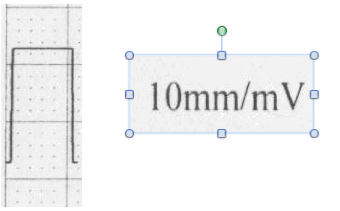Part 1
Basic principles of rhythm analysis require an understanding of speed and voltage (amplitude).
Standard recording speed is 25 mm/sec.
It is important to remember this unit of measure because it lends consistency to measurement when analyzing interval, complex and segment durations.
Part 2
If the print speed is increased or decreased, it will not only affect the distance of one cardiac complex to the next, it will affect the measurement duration of critical aspects of the cardiac complex.
Paper speed is often marked on the tracing. It is important to check this setting prior to printing and analyzing any tracing.
Part 3
Voltage is represented vertically in the cardiac tracing.
Standard calibration or gain is set at 10 mm/mV. It is important to remember this unit of measure because it lends consistency to measurement when analyzing the height and depth of cardiac waves.
If the gain is increased (20 mm/mV) or decreased (5 mm/mV), it will affect the size of the waves in a cardiac complex. This can be a useful feature when a patient’s cardiac tracing is either too small to analyze effectively or so large that the waveforms are overlapping or tracing off of the paper.
Part 4
- It is important to be aware of the settings on the equipment you are working with daily.
- Many times a calibration pulse is seen at the beginning, end or both on a cardiac tracing (it looks like a rectangle about 5 mm wide and 10 mm tall in “standard calibration”). Some units will simply print 10 mm/mV on the bottom or top of the tracing, some machines will do both. Make sure you are familiar with your equipment.

